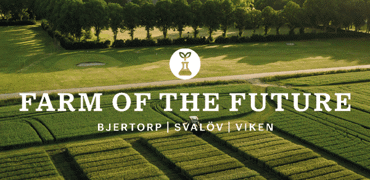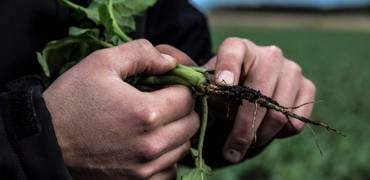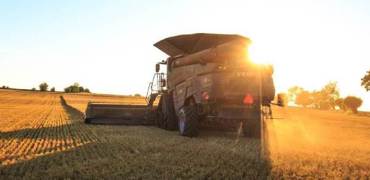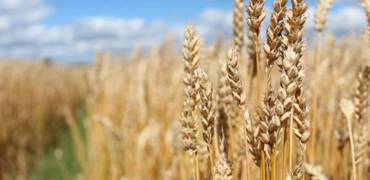Lantmännen's forecast for grain, oilseed crops and pulses amounts to 4.2 million tonnes for the 2018 harvest. By way of comparison, last year’s harvest was 6.5 million tonnes and the five-year average is 6.2 million tonnes. The reduced harvest is a big fall in income for Sweden's farmers. Substantially reduced harvests will have a direct impact on crop farmers in Sweden. This will also affect Sweden's livestock and dairy farmers as the reduced grain harvest leads to a shortage of roughage.
“We are now facing a situation where Sweden's farmers are going to be hit financially by the prevailing weather situation and the expected poorer harvest. Lantmännen is following the situation closely and we will do our very best to help our members, via such measures as being more flexible with the grain contracts we have with farmers,” says Elisabeth Ringdahl, Head of Agriculture Sector at Lantmännen.
The 2018 farming year has been exceptional. The unusually damp autumn in 2017 meant that 25 percent less winter wheat area was sown compared to the previous year. This damp period was followed by an extremely hot and dry spring throughout the country. A smaller winter wheat acreage and a reduced yield from both autumn and spring sown crops as a consequence of the drought has contributed to a sharply reduced harvest.
Some parts of the country have managed better than others thanks to local rain showers, but generally speaking, the entire country has suffered. The low harvest for the year will also have a direct and negative impact on the business Lantmännen does with industrial customers and other grain buyers.
“There is a big risk that we will not be able to deliver the volumes requested, and nor of the right quality, as we see a risk of bigger quality related problems than normal. Low testweight and higher protein content in malt barley will lead to further problems,” says Mikael Jeppsson, Head of the Grain Unit at Lantmännen.
The expected low harvest will also mean Sweden will be more dependent on wheat imports and go from normally being a net exporter to becoming a net importer. Although the situation looks similar across the entire Baltic Sea area, Sweden is the worst affected.
“Ultimately, we're talking about Sweden’s food supply. This year, we won't be able to be self-sufficient in such a staple commodity as grain,” says Jeppsson.
Lantmännen is preparing for a possible grain shortage and is following the situation closely, in communication with its owners.
“Lantmännen stands together with our members, and with the industry, we are cooperating within Swedish agriculture to do all we can in a very difficult situation. This situation is putting demands on all of us to show solidarity with each other, and we are working closely with the Federation of Swedish Farmers (LRF) and other organisations to facilitate contact between farmers when it comes to things like hay and roughage,” says Per Lindahl, Chair of the Board at Lantmännen.
Images are available at: https://lantmannen.com/en/press-and-publications/press-images/
For more information, please contact:
Mikael Jeppsson, Head of the Grain Unit, Lantmännen Lantbruk
Tel: +46 703 19 53 60
E-mail: mikael.jeppsson@lantmannen.com
Lantmännen Press Office
Tel: +46 10 556 88 00
E-mail: press@lantmannen.com























